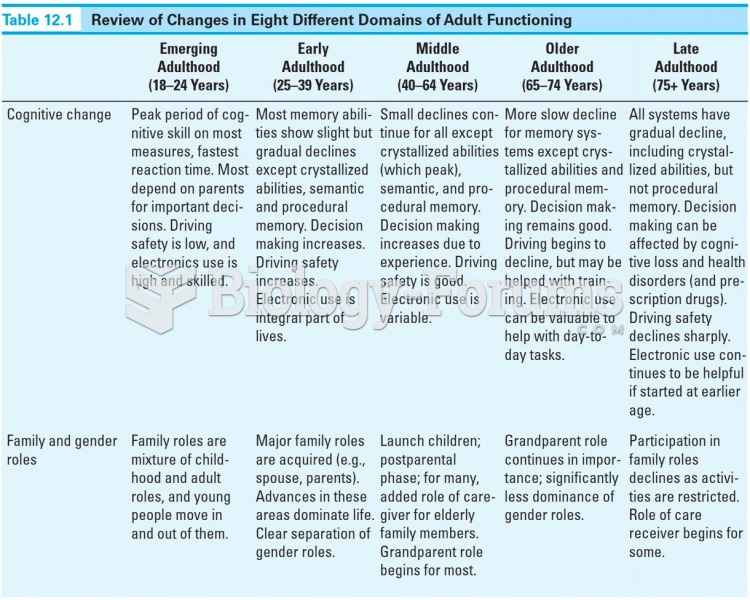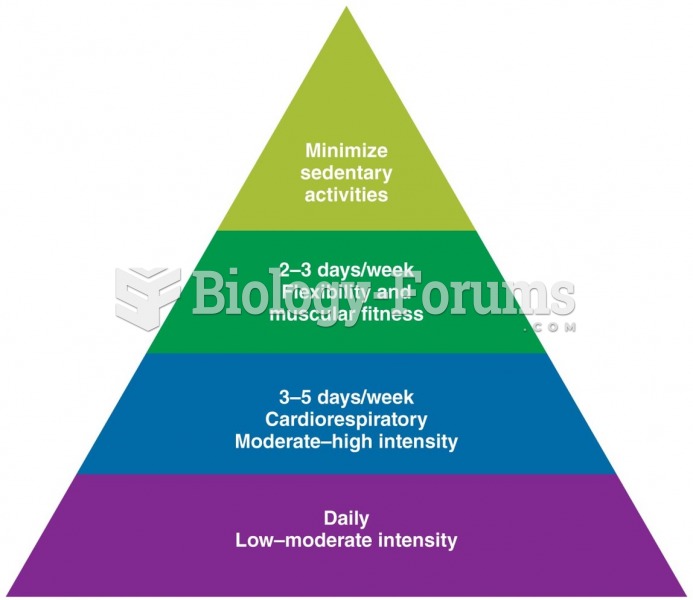|
|
|
The first documented use of surgical anesthesia in the United States was in Connecticut in 1844.
Hip fractures are the most serious consequences of osteoporosis. The incidence of hip fractures increases with each decade among patients in their 60s to patients in their 90s for both women and men of all populations. Men and women older than 80 years of age show the highest incidence of hip fractures.
The average older adult in the United States takes five prescription drugs per day. Half of these drugs contain a sedative. Alcohol should therefore be avoided by most senior citizens because of the dangerous interactions between alcohol and sedatives.
The heart is located in the center of the chest, with part of it tipped slightly so that it taps against the left side of the chest.
If all the neurons in the human body were lined up, they would stretch more than 600 miles.







